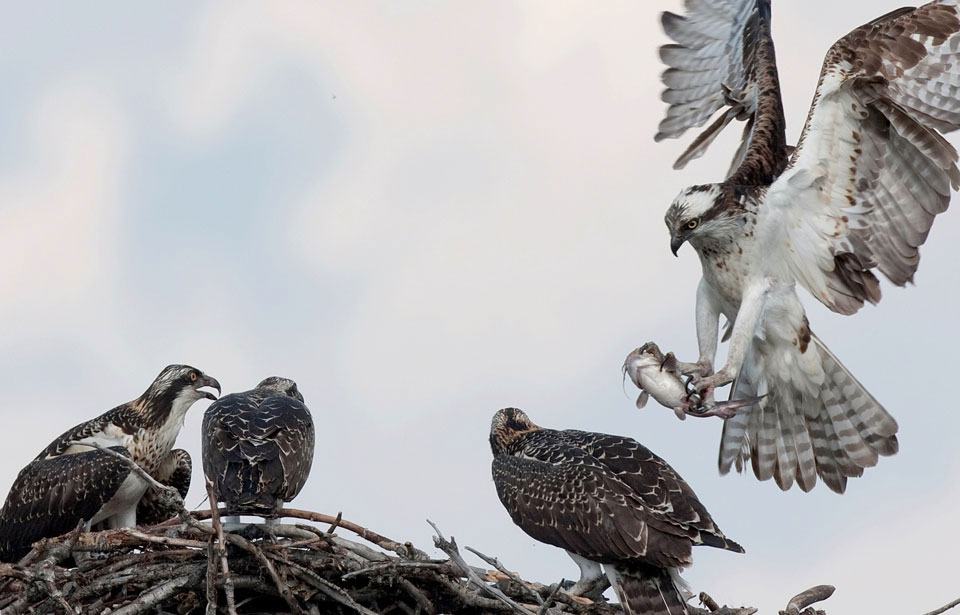The return of the osprey to Canada’s rivers and lakes is as remarkable as the rebirth of the mythical phoenix from its own ashes. Once threatened with extinction due to the harmful effects of pesticides on its eggs, the osprey has made a phenomenal comeback since DDT was banned in North America in the early 1970s. But now this magnificent fish-hawk faces another challenge: the loss of nesting sites in tall trees and snags along shallow bodies of water because of human development.
To compensate for this habitat shortage, schools, Scouts, and community groups from coast to coast are providing artificial nesting platforms — with remarkable success. There are various ways to erect nesting structure, depending on the terrain. On hard terrain, for example, platforms are usually mounted on single poles, which are bolted to rock. Quadrupods — four poles lashed together — are used to support platforms in wetlands with muddy bottoms. The scale of these projects requires that you tap into the resources of your community. Here’s how to erect a single-pole structure on soft terrain:
- Remember, location is everything. Since ospreys feed almost exclusively on fish, nesting sites should be no more than 3 km from shallow wetlands; 50 m is ideal. Choose open areas, at least 300 m apart and 100 m away from human activity.
- Before you begin, contact your ministry of natural resources to see if you need a permit to build platforms along rivers or lakes in your region.
- Find a solid utility pole, 7 to 9 m long and 1 5 or 20 cm in diameter. Your local hydro or telephone company may give away used poles.
- Secure a sturdy 1.2-m x 1.2-m shipping pallet (preferably with a 25-cm-high fence attached) to one end of the pole, using lag bolts and metal braces. Wire a few sticks to the platform to make it more appealing.
- Drill a hole, 1.5 to 2 m deep, in the earth with a power auger. Set the pole in the hole, then secure it with cement.
- Attach guy wires to the pole if necessary to make it more stable.
- Nail a sheet-metal predator guard around the base of the pole to protect osprey nestlings from raccoons.
Inspect the structure at least once a year. Remove a layer of sticks if nesting material gets deeper than 50 cm.



